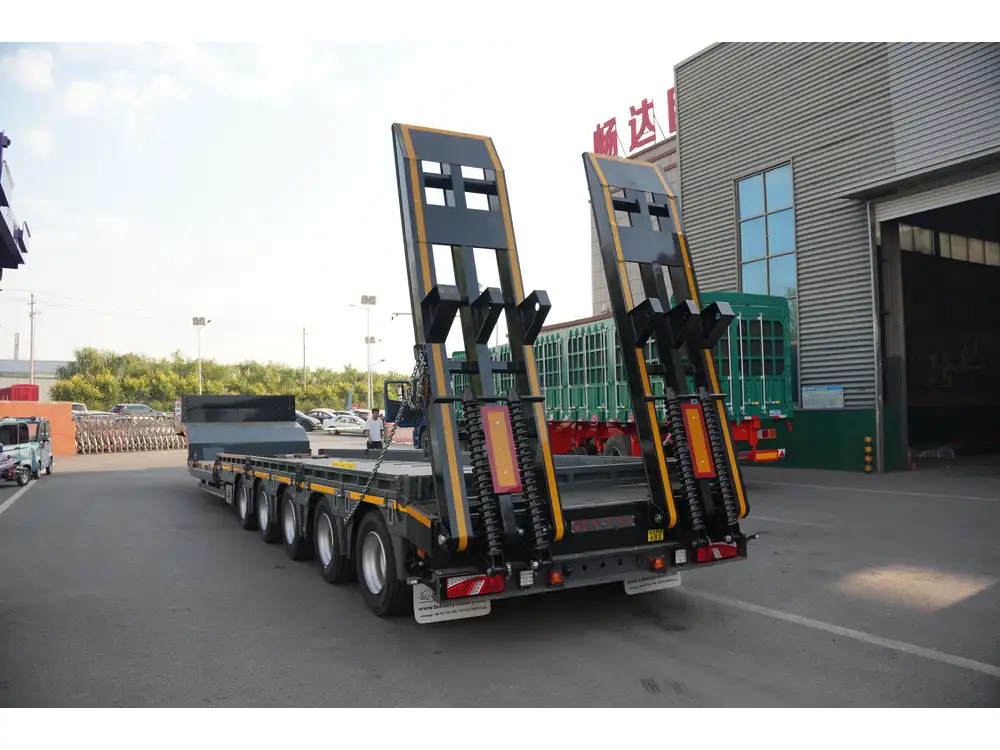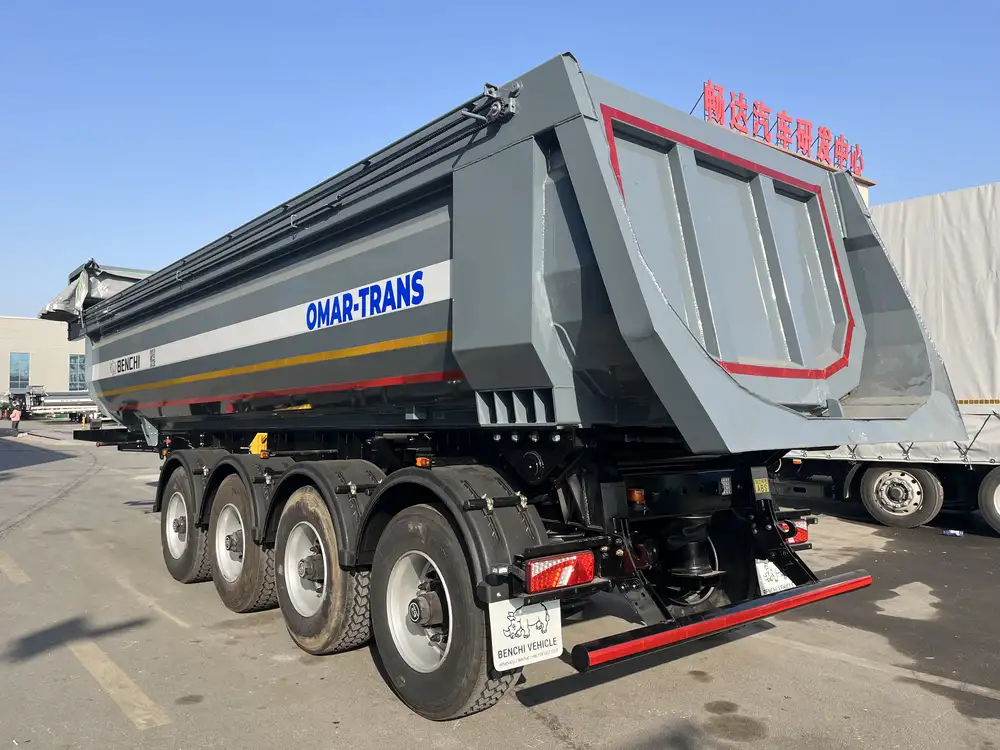Building a dump trailer is a multifaceted process that requires careful planning, precise execution, and a solid understanding of the materials and mechanisms involved. For those who aim to tackle this project, whether for personal use, as a commercial venture, or to meet specific hauling demands, this guide provides a structured approach to effectively guide you through the entire process of building a dump trailer.
Understanding the Purpose of a Dump Trailer
A dump trailer serves a vital role in various industries, including construction, agriculture, and landscaping, among others. They are designed to quickly and efficiently transport and unload materials such as gravel, sand, waste, debris, and much more. Before delving into the construction aspect, consider the intended functionality of the dump trailer:
- Capacity Requirements: Determine the load capacity necessary for your specific needs: are you transporting light materials or heavier loads?
- Size Considerations: Consider the dimensions that suit your hauling requirements and the space available for parking or maneuvering the trailer.
- Type of Mechanism: Decide on the type of dumping mechanism, such as hydraulic or electric systems, which influence the trailer’s versatility and ease of use.
By solidifying your objectives, you can better navigate the subsequent stages.
Key Materials and Tools Required
The construction of a dump trailer involves various materials and tools. Below is a comprehensive list to assist you in gathering everything necessary before starting the build.

Materials
| Material | Description |
|---|---|
| Steel Frame | Acts as the backbone of the trailer. Choose between tubular steel or angle iron for the frame. |
| Tread Plate Steel | Used for the dump bed, offers durability and resistance to wear. |
| Axles | Essential for supporting the trailer and ensuring stability while in motion. |
| Wheels | Consider the load rating and size compatibility. |
| Tires | Heavy-duty tires for optimal performance under load. |
| Hydraulic Cylinder | Provides the lifting mechanism for the dump trailer. |
| Hydraulic Pump | Powers the hydraulic system effectively. |
| Wiring and Hardware | Necessary for connections, stabilization, and functionality. |
| Paint or Coating | Protection against rust and elements to ensure longevity. |
Tools
| Tool | Purpose |
|---|---|
| Welding Machine | For assembling the metal components of the frame. |
| Angle Grinder | To cut and smooth metal surfaces. |
| Drill | For creating holes for bolts and connections. |
| Measuring Tape | Ensures accurate dimensions are adhered to. |
| Level | Verifies that the trailer is constructed evenly. |
| Saw (Metal) | Used for cutting steel to size. |
| Safety Equipment | Gloves, goggles, and masks are essential for workshop safety. |
Step-by-Step Guide to Building a Dump Trailer

1. Designing Your Dump Trailer
An effective design is foundational for any successful build. Start by creating detailed blueprints or CAD drawings that include dimensions, materials, and a visual representation of the final product. Key design elements to include are:
- Dimensions: Length, width, and height of the trailer bed.
- Frame Structure: Design the frame to distribute load evenly and minimize stress on individual components.
- Dump Mechanism: Plan where to place the hydraulic lift, pump, and piston.
2. Constructing the Frame
A sturdy frame provides the necessary foundation for your dump trailer. Follow these steps:
- Cut Steel to Size: Use an angle grinder or metal saw to cut the steel according to your blueprint dimensions.
- Assemble the Framework: Start welding the pieces together. Make sure to form a rectangular or square shape as per your design.
- Install Cross Members: Install cross members at regular intervals to add additional support to the frame. These are crucial for maintaining the structural integrity under heavy loads.
3. Adding the Dump Bed
The dump bed is where you will load your materials, and it must be crafted to withstand robust usage.
- Fabricate the Bed: Cut tread plate steel to size and weld it securely to the frame. Ensure there are no sharp edges exposed to avoid safety hazards.
- Install Side Walls: If needed, create and attach side walls to the bed to retain materials during transport. Ensure that they are securely anchored.

4. Installing the Axles and Wheels
Responsible for stability and movement, the axles and wheels must be precisely installed.
- Position the Axles: Determine the right placement for your axles based on weight distribution and your trailer design.
- Weld or Bolts for Durability: Securely attach the axles to the frame, ensuring they can handle the stress of loaded transport.
- Mount the Wheels: Attach the appropriately sized wheels to the axles following the manufacturer guidelines.
5. Hydraulic System Installation
Hydraulic systems facilitate the dumping mechanism necessary for efficient unloading:
- Mount Hydraulic Cylinder: Install the hydraulic cylinder on a predetermined location on the frame, ensuring it is securely fastened and correctly aligned with the dump bed.
- Connect the Hydraulic Pump: Secure your hydraulic pump in an accessible location and connect it to the hydraulic cylinder using hoses. Ensure to check for any leaks.
- Electrical Connections: Wire the pump to a power source, whether it’s a battery or a specific connection to the vehicle’s electrical system.
6. Final Assembly and Tune-up
With the main structure completed, it’s time for the assembly of various components and a thorough inspection:
- Joint Connections: Examine all the joints where welding was performed. Ensure they are strong and provide structural integrity.
- Safety Features: Add safety features such as a locking mechanism for the dump bed and lights for road visibility.
- Test Run: Before hauling loads, conduct a test run to ensure that all components are functioning as intended.

7. Finishing Touches
To enhance the lifespan and appearance of your dump trailer, consider these final adjustments:
- Surface Treatments: Apply paint or appropriate coating to safeguard against rust and wear.
- Signage and Markings: Consider adding regulatory markings or company branding to the trailer.
Essential Considerations for Maintenance and Upkeep
Post-construction, it is essential to maintain your dump trailer to ensure its longevity and performance. Here are some tips:
- Regular Inspections: Perform frequent checks on the hydraulic system, frame integrity, and wheel condition.
- Lubrication: Ensure that moving parts, particularly in the hydraulic system, are well-lubricated to avoid friction and wear.
- Tire Maintenance: Maintain optimal tire pressure and inspect for damage regularly.
Troubleshooting Common Issues
Even with proper construction and maintenance, issues may arise. Here are some common problems you may encounter:
| Problem | Potential Cause | Solution |
|---|---|---|
| Hydraulic system leakage | Worn or damaged hoses | Replace hoses and check for faults. |
| Uneven load distribution | Incorrect loading practices | Distribute load evenly through the trailer. |
| Difficulty in raising the bed | Low hydraulic fluid levels | Check fluid levels and refill as necessary. |
| Frame stress or bending | Overloading the trailer beyond capacity | Reassess load limits and adhere strictly to specifications. |

Conclusion
Combining engineering principles with practical skills, building a dump trailer is a rewarding venture that augments hauling capabilities for construction tasks, landscaping projects, and various transportation needs. Understanding the design, material selection, and careful assembly equips you with the knowledge to create a highly functional piece of equipment tailored to your needs. Regular maintenance ensures that your investment continues to serve you effectively, making it an indispensable tool in your arsenal for years to come.
Taking this comprehensive approach will not only enable you to build a reliable dump trailer but also foster a sense of accomplishment. We trust that this guide serves as an insightful roadmap, navigating the complexity of a dump trailer build with precision and calculated foresight.



